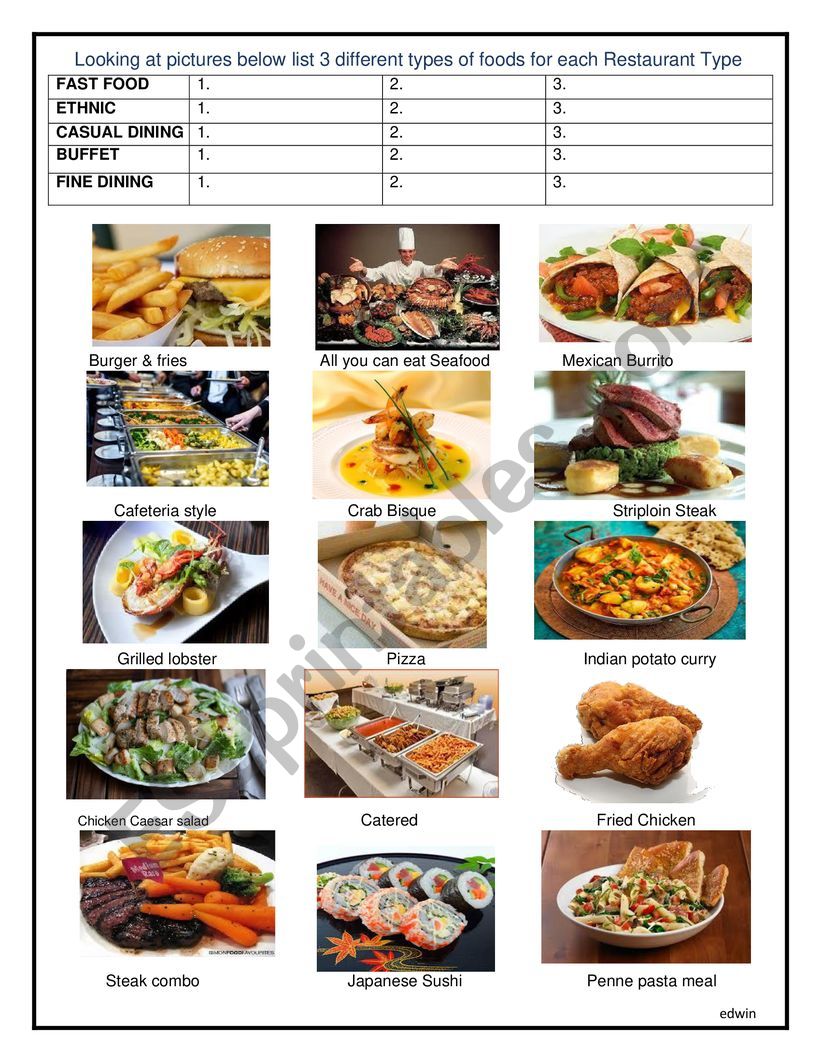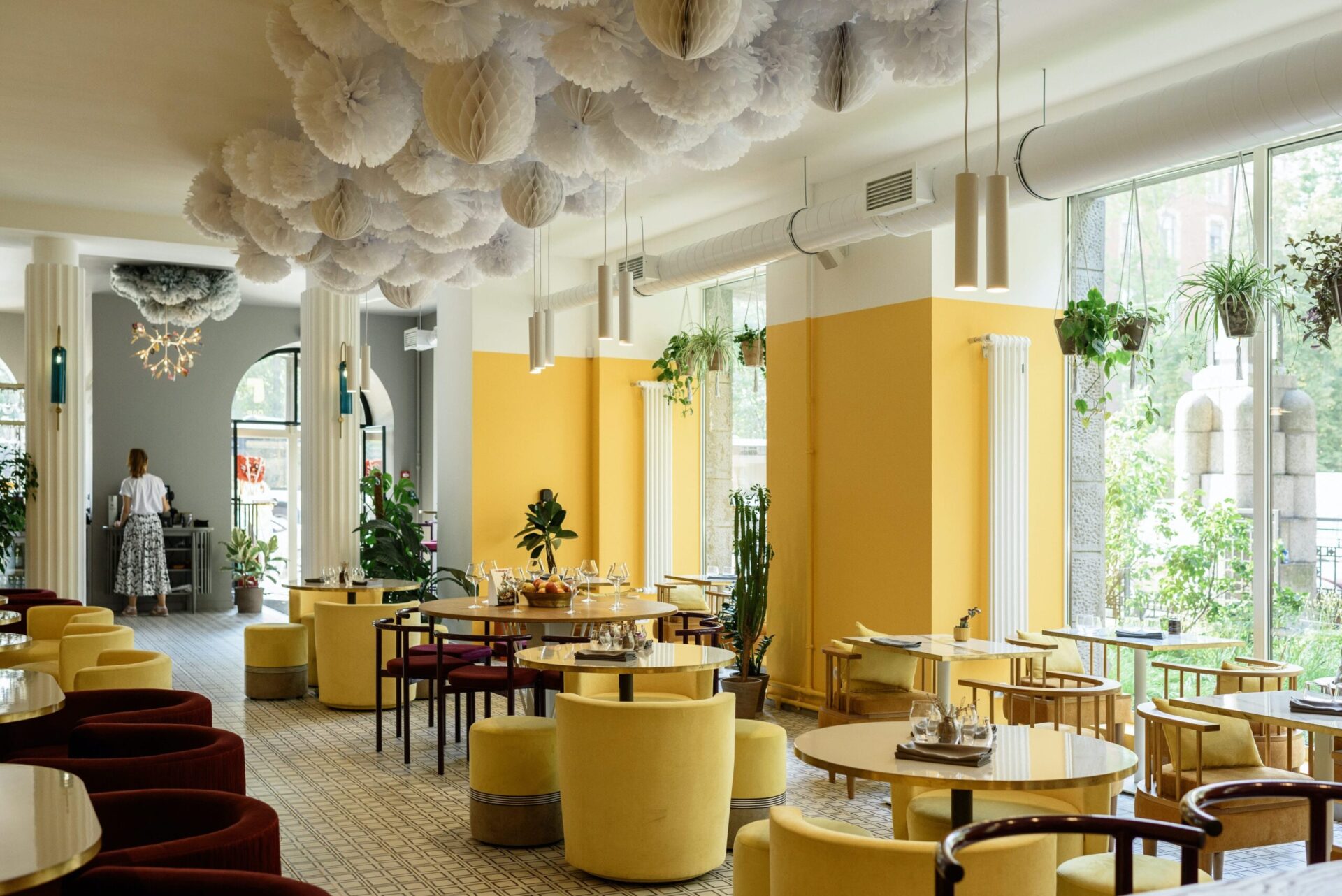How to experience the Best Restaurants that locals love for authentic flavor
How to experience the Best Restaurants that locals love for authentic flavor
Blog Article
Eating Delights: Discover Cutting-edge Restaurants Transforming the Food Scene
The contemporary dining landscape is experiencing an exceptional improvement, noted by cutting-edge dining establishments that are redefining culinary norms. From the surge of pop-up facilities welcoming seasonal active ingredients to immersive experiences that involve the senses in unprecedented methods, these venues are setting brand-new criteria for what it means to delight in a meal. Furthermore, a growing focus on sustainability and neighborhood sourcing mirrors a dedication to both high quality and area. As we discover these fads, the concern emerges: what future advancements might further reshape our cooking experiences?
The Increase of Pop-Up Restaurants
As the culinary landscape evolves, pop-up restaurants have actually become a vibrant pressure, enchanting food enthusiasts and business owners alike. These short-term dining facilities, typically set up in unusual rooms, provide an one-of-a-kind mix of creativity and ease of access, interesting a diverse variety of customers. The increase of pop-up dining establishments can be credited to numerous aspects, including the expanding need for unique eating experiences and the business spirit of chefs keen to examine their culinary concepts without the monetary problem of an irreversible location.Pop-up restaurants enable chefs to experiment with menus, styles, and styles, often concentrating on seasonal or locally-sourced components. This versatility not just promotes innovation however likewise creates a sense of seriousness, as clients are drawn to the limited-time offerings. The ephemeral nature of pop-ups grows a buzz around the dining experience, urging social media sites sharing and word-of-mouth promo, which can greatly boost visibility and bring in a loyal following.Furthermore, pop-up dining establishments often deal with specific niche markets, varying from vegan and gluten-free alternatives to ethnic foods, consequently satisfying the diverse dietary choices of contemporary customers. Therefore, these facilities add to the rich tapestry of the food scene, pushing limits and difficult standard ideas of eating.
Immersive Dining Experiences

Lasting Practices in Cuisine
Embracing sustainability, ingenious restaurants are redefining their cooking techniques to reduce environmental impact while enhancing the eating experience. These facilities prioritize neighborhood sourcing, often working together with neighboring farmers and producers to guarantee that ingredients are fresh and seasonal. This not only reduces the carbon footprint connected with long-distance transportation however additionally sustains regional economies.In enhancement to sourcing, dining establishments are progressively embracing practices that minimize waste. Several are applying composting systems and using food scraps creatively, changing what would generally be thrown out into flavorful parts of brand-new dishes. For instance, veggie trimmings can find new life in stocks or garnishes, while stale bread is repurposed right into croutons or bread puddings.Moreover, the pattern in the direction of plant-based food selections is acquiring energy (Restaurants). By emphasizing veggies, grains, and beans, restaurants can significantly decrease their environmental effect, as plant-based foods usually require less resources and create much less greenhouse gas emissions compared to meat manufacturing. Ingenious cooks are crafting meals that not just commemorate these active ingredients but also offer restaurants with a phenomenal cooking experience.Furthermore, several facilities are taking on eco-friendly techniques such as using biodegradable product packaging for takeout and investing in energy-efficient home appliances. These measures mirror a commitment to sustainability at every degree of operation, allowing restaurants to enjoy their meals with the knowledge that their selections add to a healthier world. As the food scene remains to advance, the assimilation of sustainable practices becomes not just a pattern, yet a necessary criterion for the future of eating
Tech-Enhanced Dining Adventures
Tech-enhanced eating adventures are reinventing the means customers experience dishes, with over 70% of restaurants currently incorporating electronic technologies to elevate service and engagement. These innovations are not merely trends; they are basic shifts that redefine the cooking landscape. From the moment diners enter a restaurant, technology is perfectly woven into the experience, improving both ease and enjoyment.One of one of the most noteworthy advancements is making use of mobile applications for reservations and menu surfing. Diners can now watch detailed summaries, dietary info, and even the origins of active ingredients at their fingertips. This openness cultivates informed choices and allows visitors to tailor their eating experience to their preferences.Furthermore, interactive tables equipped with touchscreens supply an interesting system for buying and home entertainment. Diners can tailor their dishes, explore wine pairings, or perhaps play games while waiting on their meals. This combination of technology not just streamlines the buying process yet also transforms dining right into a dynamic, common activity.Moreover, some facilities are utilizing enhanced truth (AR) to produce immersive eating experiences. By merely directing a smartphone at a dish, patrons can imagine the active ingredients and cooking techniques in an appealing way, bridging the gap in between the culinary and digital worlds.As dining establishments remain to welcome these technical innovations, the eating experience ends up being significantly individualized, reliable, and enjoyable. This improvement mirrors a broader trend in the direction of improving customer interaction, guaranteeing that each dish is not just concerning nourishment, however an extraordinary experience in eating.
International Tastes With a Twist
The culinary landscape is progressively noted by blend cuisine technologies that mix standard tastes with unforeseen aspects - Best Restaurants. Unique active ingredient pairings not only improve the dining experience yet additionally admire cultural heritage, reimagining beloved meals in exciting brand-new ways (Restaurants). This imaginative method invites restaurants to explore diverse international influences while experiencing acquainted tastes in a fresh context
Fusion Food Innovations
Creativity in the cookeries has led to a vibrant renewal of blend cuisine, where cooks blend diverse international flavors to create cutting-edge meals that defy conventional limits. This culinary movement transcends simple combination, concentrating on the harmonious combination of ingredients and techniques from different cultures.Restaurants specializing in combination food are redefining dining experiences by offering recipes that narrate via flavor, technique, and discussion. The marriage of Japanese sushi with Peruvian ceviche has actually resulted in special rolls that celebrate both cooking heritages. Indian seasonings have actually found their means right into Italian pasta recipes, supplying a delightful twist on traditional recipes.Chefs are also experimenting with cooking techniques, such as using typical wok methods to prepare Latin American stir-fries, thus developing a rich tapestry of tastes and textures. Seasonal schedule of ingredients additionally improves this creative process, enabling fresh analyses of time-honored dishes. The allure of blend cuisine hinges on its capacity to shock and pleasure the taste buds, urging diners to explore brand-new cooking landscapes while promoting a higher appreciation for the variety of international gastronomy.
Unique Component Pairings
Cooking advancement typically grows on the unanticipated, and special active ingredient pairings go to the center of this fad in the contemporary eating landscape. Cooks are progressively try out combinations that surprise and thrill the palate, elevating the dining experience past traditional boundaries.For example, the juxtaposition of wonderful and mouthwatering has actually ended up being a characteristic of modern food. American Restaurant. Consider crispy duck served with a cherry and balsamic polish, where the tartness of the cherries complements the richness of the meat. Likewise, recipes featuring miso-infused chocolate treats display how umami can enhance sweetness, developing a balanced flavor profile that intrigues diners.Furthermore, the usage of non-traditional seasonings in unanticipated contexts, such as saffron in a traditional risotto coupled with lemon passion, highlights just how culinary boundaries can be redefined. These innovative pairings not just produce visual and textural contrasts but additionally invite diners to discover a spectrum of worldwide tastes in a solitary dish.As restaurants proceed to forge ahead, the thrill of discovering new preferences through special component pairings promises to be a defining function of the contemporary food scene, welcoming daring eaters to delight in these creative cooking dialogues
Social Heritage Reimagined

The Art of Multi-Sensory Cuisines
In the domain of cooking development, multi-sensory dishes are changing the eating experience by linking flavor and aroma in captivating ways. The effect of aesthetic presentation improves not just the aesthetic allure yet also the understanding of preference, while carefully curated soundscapes elevate the setting. With each other, these components create a holistic experience that involves all detects, changing exactly how customers attach with food.
Flavor and Aroma Fusion
A growing variety of chefs are embracing the idea of flavor and scent combination, recognizing that a dish is not just a mix of ingredients however an alternative experience Related Site that involves all the detects. This ingenious strategy stresses the intricate partnership between preference and odor, both of which significantly influence our perception of food.Chefs are trying out numerous methods to improve tastes while all at once crafting aromatic accounts that boost the eating experience. For instance, making use of fragrant herbs and spices not only includes depth to meals however likewise entices the olfactory senses, creating a much more immersive experience. Mixtures, smoke, and important oils are significantly popular, enabling chefs to adjust fragrance and improve the overall flavor profile.Moreover, the critical pairing of complementary and contrasting flavors can evoke emotional responses, changing a meal right into a remarkable event. Restaurants are encouraged to relish each bite, as the interaction of flavors and scents unravels, inviting them to explore new dimensions of taste. This thoughtful combinations of sensory components fosters an admiration for the creativity of cuisine, positioning flavor and scent fusion as a crucial trend in modern gastronomy.
Visual Discussion Effect
Past taste and aroma, the visual presentation of a meal plays an important function in the overall eating experience. The aesthetics of food can stimulate feelings, set the tone for the meal, and improve the anticipation of sampling. Cutting-edge restaurants are increasingly recognizing that a dish's look can affect guests' perceptions and fulfillment degrees, in some cases also before the initial bite is taken.Artful plating strategies, vivid color mixes, and innovative garnishes add to a dish's aesthetic allure. Chefs are now trained not just in cooking abilities, but likewise in the art of presentation, frequently attracting inspiration from numerous imaginative self-controls. The usage of unfavorable room in plating assists to create focal points, enabling the components to shine.Moreover, the pattern of multi-sensory dishes incorporates aesthetic elements with other senses, such as texture and temperature, to develop a holistic dining experience. This strategy encourages diners to involve more deeply with their food, changing an easy dish right into a remarkable event. Basically, the visual presentation of food is not just an aesthetic venture; it is a vital component of the eating experience that can elevate a dish from regular to amazing.
Soundscapes in Eating
The experience of dining extends past the aesthetic aspects of a dish; sound likewise plays a significant duty in forming how food is regarded and appreciated. Cutting-edge dining establishments are increasingly checking out the principle of soundscapes-- curated audio atmospheres created to enhance the dining experience (Eddie's Rise N' Dine Williamsville IL). The interaction of audio and taste can exceptionally affect an individual's understanding of taste, structure, and overall satisfaction.Research suggests that details noises can amplify or reduce tastes. Shrill sounds may improve sweetness, while reduced frequencies can heighten anger. This phenomenon has actually led some cooks and restaurateurs to collaborate with sound developers, producing special auditory backdrops that match their cooking offerings. Best Restaurants.In these setups, restaurants may discover themselves immersed in a very carefully crafted audio environment, ranging from the gentle rustle of leaves to the rhythmic noises of a dynamic cooking area. Such multisensory meals not only involve the palate yet additionally stimulate emotional reactions, enhancing the overall experience. By utilizing the power of sound, these cutting-edge dining establishments are redefining the method we experience food, motivating customers to savor each bite while fully involving their senses
Community-Centric Culinary Initiatives
Frequently, cutting-edge dining establishments are redefining their duties within regional neighborhoods by implementing cooking initiatives that prioritize social duty and inclusivity. These establishments are progressively appealing in methods that not just enhance their company models yet likewise contribute to the well-being of their neighborhoods.One noticeable fad is the establishment of community cooking areas that use cooking training and task positioning for underserved populaces. These cooking areas not just offer important abilities yet also cultivate a feeling of belonging, encouraging people to produce their own culinary paths. Furthermore, several dining establishments are partnering with local ranches and manufacturers, emphasizing farm-to-table practices that sustain lasting farming and reduce carbon footprints. This not just assures quality and top quality yet additionally strengthens local economies.Another effort acquiring grip is the idea of communal eating experiences, where diverse teams collaborated to share dishes and stories. This strategy cultivates understanding and recognition amongst different societies, damaging down obstacles and fostering inclusivity. Restaurants are significantly taking on waste decrease methods, such as composting and reusing food scraps, which not only addresses ecological issues yet also motivates clients to reflect on their consumption routines.
Regularly Asked Inquiries
How Do Cutting-edge Dining Establishments Preserve Uniformity in Food Top Quality?

What Are the Prices Linked With Starting a Pop-Up Restaurant?
Beginning a pop-up restaurant involves various prices, including venue service, equipment purchases, permits, advertising and marketing, staffing, and food supplies. In addition, business owners ought to spending plan for unexpected expenses to assure smooth operations throughout the venture's duration.
How Do Restaurants Pick Their Locations for Pop-Up Occasions?
Restaurants choose pop-up occasion places based upon target demographics, foot web traffic, access, and competition. Additionally, they consider local market fads and neighborhood engagement opportunities to take full advantage of presence and improve customer experience throughout the occasion.
What Impact Do Food Trends Carry Restaurant Menus?
Food patterns greatly influence restaurant food selections by assisting component selection, influencing dish creativity, and forming consumer choices. Facilities typically adapt to these patterns to boost client allure, maintain competition, and line up with evolving culinary expectations.
Exactly How Can Diners Support Community-Centric Culinary Initiatives?
Diners can sustain community-centric culinary efforts by buying neighborhood restaurants, taking part in farm-to-table events, involving with food cooperatives, promoting lasting methods, and supporting for policies that reinforce local food systems and improve community health.
Report this page